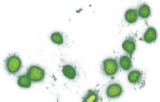Sartorius Stedim
 |
||
Sartorius is one of the world's leading providers of laboratory and process technologies and equipment. Our innovative products and high-quality services help customers around the globe implement complex and quality-critical processes in biopharmaceutical production and laboratory environments in a time- and cost-efficient way. Our key customers are from the biotech, pharma and food industries, as well as from public research institutes and laboratories. Sartorius operates its own production facilities in Europe, Asia and America, and also has sales offices and local representatives in more than 110 countries. Strongly rooted in the scientific and research communities and closely allied with customers and technology partners, the company is dedicated to its philosophy of "Turning science into solutions" every single day. Website : www.sartorius.co.uk | ||

Cell culture Products
- Cells recently removed from an organism (biopsy). We then speak of primary culture and primary cells. These cells cannot be kept in culture indefinitely because they have a limited division capacity (limited number of divisions).
- Immortalized cells or cell lines. These cells have an unlimited capacity of division. These cell lines can be cancer cells, healthy cells made artificially immortalized or stem cells.



